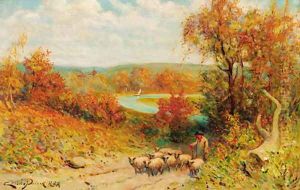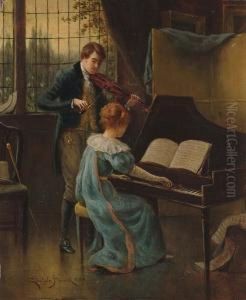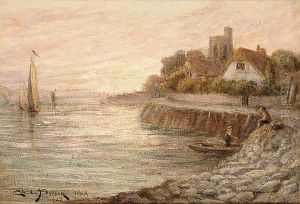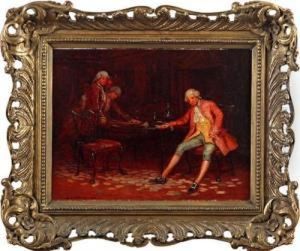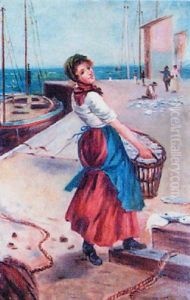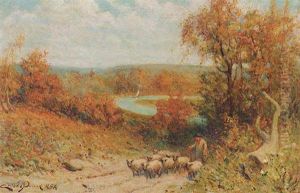Henry Childe Pocock Paintings
Henry Childe Pocock was an English architect and artist known for his watercolor paintings. Born in 1866, Pocock came from a family with a strong connection to architecture; his father, George Pocock, was also an architect. This background profoundly influenced Henry's career and artistic development.
After receiving his education, Pocock followed in his father's footsteps and entered the architectural profession. He worked on various projects, focusing primarily on ecclesiastical buildings and restoration work, which was a common practice among architects during that period in Britain, due to the Victorian fascination with medieval architecture.
While his professional life was dedicated to architecture, Pocock also pursued his passion for painting. He specialized in watercolors, a medium that was highly popular in England during the 19th and early 20th centuries. His works often depicted architectural subjects, reflecting his professional expertise, as well as landscapes and rural scenes. Pocock's paintings were known for their delicate use of color and attention to detail, characteristics that are typical of the watercolor technique.
Pocock's life spanned a period of significant change in the arts, from the late Victorian era through the Edwardian period and into the early modernist era. However, he remained largely traditional in his style, rooted in the picturesque and romantic visions of the English countryside and its historic buildings.
Henry Childe Pocock passed away in 1933, leaving behind a legacy as both an architect and a painter. His works are part of the history of English watercolor painting and contribute to our understanding of the visual culture of his time. While he may not be as widely known as some of his contemporaries, Pocock's art provides a window into the aesthetic values and practices of his era.
